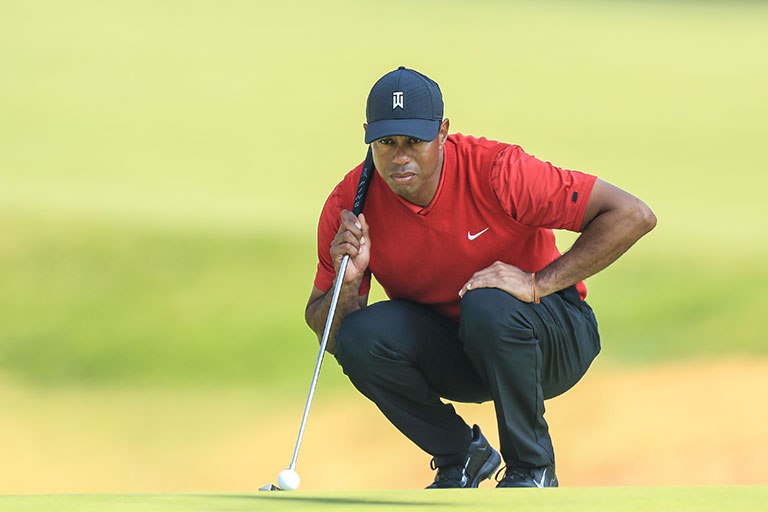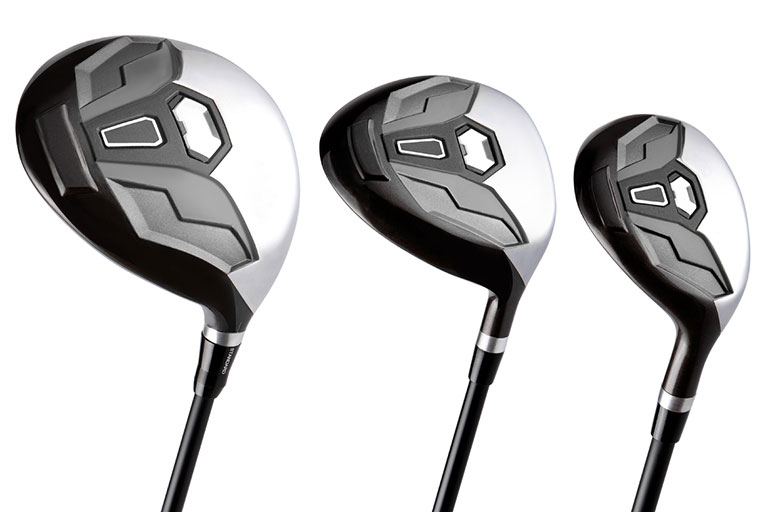With ongoing weight improvements, durability and the best ‘feel’, pro golfers choose golf clubs made with steel to deliver the best possible performance.
Since the late 19th century, steel has been used to enhance the durability, strength and performance of golf clubs. As the modern game developed, golf club manufacturers experimented with many different kinds of materials – from graphite to titanium – to try and achieve tougher game-enhancing equipment.
But, despite the competition, golf clubs made with steel continued to hit the top levels, and as a result have remained a favourite with pros for the qualities they bring to the game.
 Tiger Woods won 14 of his 15 major championships using the same stainless steel putter (David Cannon / Getty Images)
Tiger Woods won 14 of his 15 major championships using the same stainless steel putter (David Cannon / Getty Images)
Why do steel golf clubs remain a favourite for golf pros?
During the mid 2000s, many pros switched to graphite-shafted clubs. But top names, such as Jimmy Walker, are now choosing to return to their steel-shafted clubs, which they say have a better ‘feel’ than other materials.
Steel-shafted clubs resonate on impact with the ball and send vibrations from the head to the grip. For pros, this feedback from the club is vital, letting them know if they’ve hit the ‘sweet spot’ in the centre of the club face.
While a lighter club may improve swing speeds, many pro golfers prefer a bit of weight to provide them with more control. This enables pros to control their swing at speeds over 100mph, crucial for hitting accurately and sending the ball up to 300 yards.
While steel-shafted clubs tend to range between 70g and 140g, compared to 60g to 70g for graphite clubs, club makers like Nippon are developing ever lighter steel shafts, introducing the industry’s first 68.5g steel shaft in 2018 to cater to all levels of golfers.
 Adding a maraging steel panel to non-steel club faces increases ball velocity when striking
Adding a maraging steel panel to non-steel club faces increases ball velocity when striking
A club for life
Due to their strength and durability, steel golf clubs are also the longest-lasting. The steel and carbon alloy, along with chrome plating, makes steel clubs very strong and able to withstand long periods of usage.
When properly cared for, steel clubs can last for decades – Tiger Woods has famously been playing with his Scotty Cameron Newport 2 German Stainless Steel prototype putter since 1999, using it in 14 out of his 15 major championship victories.
Flexibility in club heads
And it’s not just the shafts of clubs that can be made from steel. Because it can be cast into different shapes, stainless steel has long been used to make golf club heads, leading to better performing heads, such as cavity backs.
A more recent advancement has been the addition of incredibly tough and thin maraging steel inserts to the faces of high-performance club heads, in brands such as Hireko.
Maraging steels are created through an intense, extended heating process, resulting in ultra-high-strength, low-carbon steels, which are crack-resistant even when stretched very thin. Adding a thin maraging steel face insert to the club head allows the face to act like a trampoline, emphasising the rebound effect of the ball and increasing its velocity.
Maraging steels are a popular choice for pro golf club makers as they can be easily bonded to a frame, allowing for more customisable, multiple material or hybrid options. Also, as only a thin slice of maraging steel is needed, club designers can make considerable weight savings, using it elsewhere in the club to improve launch angles and reduce spin.
As sports technology advances, it speaks volumes that pro golfers are still turning to steel to gain a competitive advantage, because they know it continues to offer the versatility, longevity, strength and performance they need.
Images: iStock, David Cannon / Getty Images